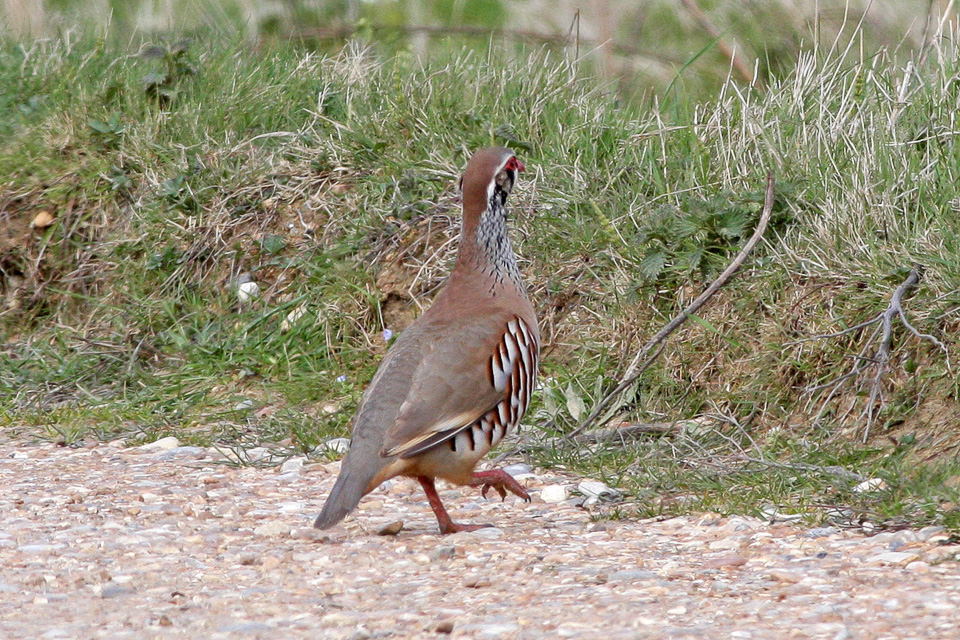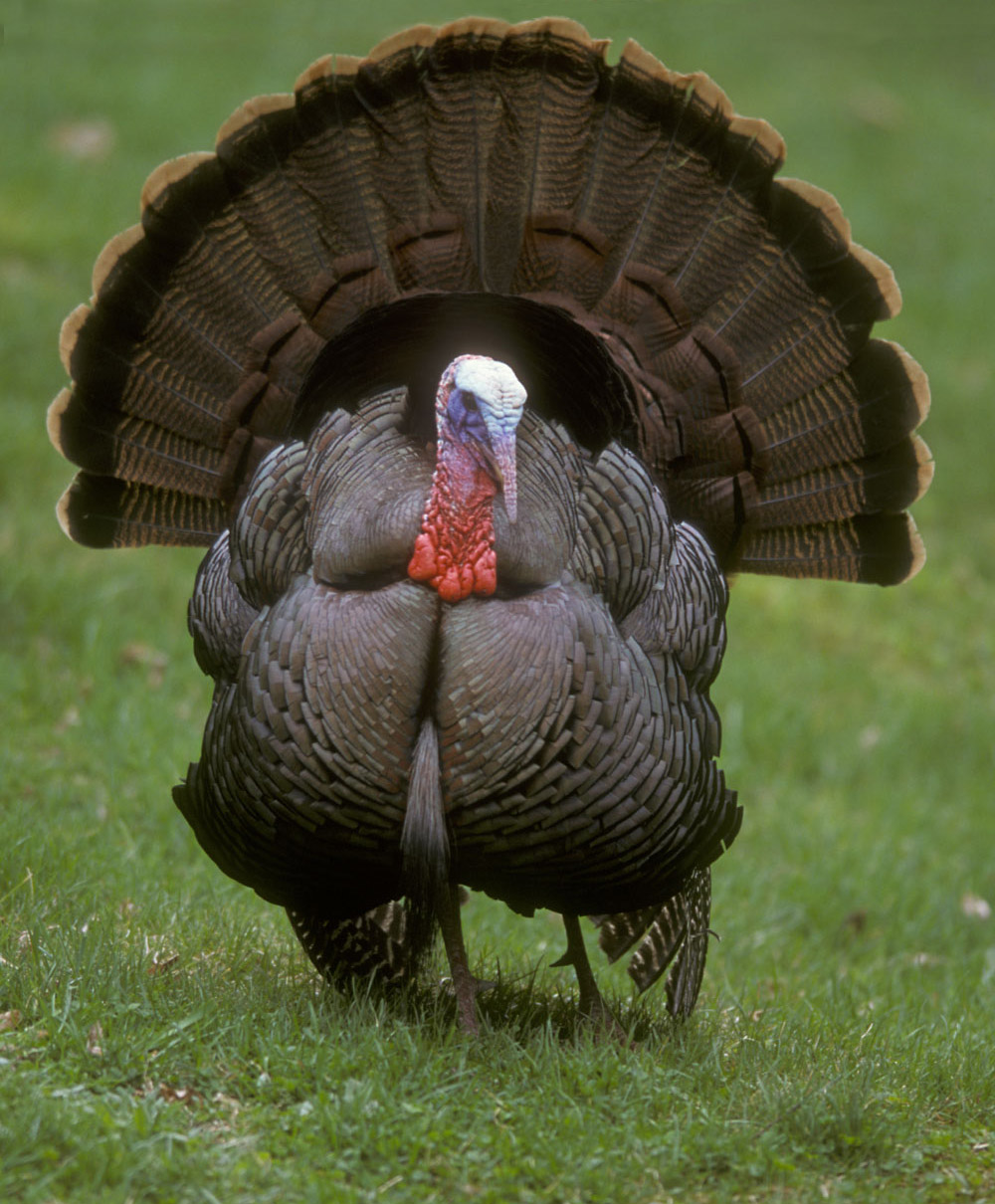|
Tetraophasis
''Tetraophasis'' is a genus of Galliformes in the family Phasianidae, which includes chickens, pheasants, partridges, grouse, turkeys, quail, and peafowl. It contains the following species: * Chestnut-throated monal-partridge or Verreaux's monal-partridge (''Tetraophasis obscurus'') * Buff-throated monal-partridge or Szechenyi's monal-partridge (''Tetraophasis szechenyii'') The name ''Tetraophasis'' is a combination of the genus name ''Tetrao'' (the name Carl Linnaeus gave grouse in 1758), and the modern Latin word ''phasis'', meaning "pheasant". Monal-partridge are close relatives of monals and more distantly related to tragopan. They are boreal adapted species of high altitudes. Like monals they dig in alpine biomes for tubers, rhizomes and invertebrates as well as rodent pups and voles Voles are small rodents that are relatives of lemmings and hamsters, but with a stouter body; a longer, hairy tail; a slightly rounder head; smaller eyes and ears; and differently fo ... [...More Info...] [...Related Items...] OR: [Wikipedia] [Google] [Baidu] |
Buff-throated Monal-partridge
Buff-throated monal-partridge (''Tetraophasis szechenyii''), also known as buff-throated partridge or Szechenyi's monal-partridge, is a member of the family Phasianidae in the order Galliformes. It is endemic to western China. Taxonomy The Latin binomial commemorates Béla Széchenyi, a Hungarian explorer. Complete mitochondrial Whole genome sequencing, genome sequencing of the species places the buff-throated monal-partridge in the genus Tetraophasis in the family Phasianidae. Phylogenetics, Phylogenetic positioning of the Tetraophasis has been understudied, though there is strong support that it and genus Monal, Lophophorus are sister genera, forming a subclade with Tragopan. Description The buff-throated monal-partridge is a sexually monochromatic, medium-sized species of partridge. It has a distinct orange horizontal teardrop shaped eye ring, a light gold Gorget (bird), gorget, as well as a crest that it can occasionally flare up. The species has a grey upper chest and s ... [...More Info...] [...Related Items...] OR: [Wikipedia] [Google] [Baidu] |
Tetraophasis
''Tetraophasis'' is a genus of Galliformes in the family Phasianidae, which includes chickens, pheasants, partridges, grouse, turkeys, quail, and peafowl. It contains the following species: * Chestnut-throated monal-partridge or Verreaux's monal-partridge (''Tetraophasis obscurus'') * Buff-throated monal-partridge or Szechenyi's monal-partridge (''Tetraophasis szechenyii'') The name ''Tetraophasis'' is a combination of the genus name ''Tetrao'' (the name Carl Linnaeus gave grouse in 1758), and the modern Latin word ''phasis'', meaning "pheasant". Monal-partridge are close relatives of monals and more distantly related to tragopan. They are boreal adapted species of high altitudes. Like monals they dig in alpine biomes for tubers, rhizomes and invertebrates as well as rodent pups and voles Voles are small rodents that are relatives of lemmings and hamsters, but with a stouter body; a longer, hairy tail; a slightly rounder head; smaller eyes and ears; and differently fo ... [...More Info...] [...Related Items...] OR: [Wikipedia] [Google] [Baidu] |
Tetraophasis Obscurus
Chestnut-throated monal-partridge (''Tetraophasis obscurus''), also known as chestnut-throated partridge or Verreaux's monal-partridge, is a bird species in the family Phasianidae. It is found only in central China. Its natural habitat is boreal forest. The common name "Verreaux's monal-partridge" commemorate the French naturalist Jules Verreaux Jules Pierre Verreaux (24 August 1807 – 7 September 1873) was a French botanist and ornithologist and a professional collector of and trader in natural history specimens. He was the brother of Édouard Verreaux and nephew of Pierre Antoine Delal .... References Chestnut-throated monal-partridge Birds of Central China Endemic birds of China Chestnut-throated monal-partridge Taxonomy articles created by Polbot {{Galliformes-stub ... [...More Info...] [...Related Items...] OR: [Wikipedia] [Google] [Baidu] |
Partridge
A partridge is a medium-sized Galliformes, galliform bird in any of several genera, with a wide Indigenous (ecology), native distribution throughout parts of Europe, Asia and Africa. Several species have been introduced to the Americas. They are sometimes grouped in the Perdicinae subfamily of the Phasianidae (pheasants, quail, etc.). However, molecular research suggests that partridges are not a distinct taxon within the family Phasianidae, but that some species are closer to the pheasants, while others are closer to the junglefowl. Description Partridges are medium-sized Game (hunting), game birds, generally intermediate in size between the larger pheasants, smaller quail; they're ground-dwelling birds that feature variable plumage colouration across species, with most tending to grey and brown. Range and habitat Partridges are native to Europe, Asia, Africa, and the Middle East. Some species are found nesting on steppes or agricultural land, while other species prefer mor ... [...More Info...] [...Related Items...] OR: [Wikipedia] [Google] [Baidu] |
Phasianidae
Phasianidae is a family (biology), family of heavy, ground-living birds, which includes pheasants, grouse, partridges, junglefowl, chickens, Turkey bird, turkeys, Old World quail, and peafowl. The family includes many of the most popular Game (hunting), gamebirds. The family includes 185 species divided into 54 genera. It was formerly broken up into two subfamily (biology), subfamilies, the Phasianinae and the Perdicinae. However, this treatment is now known to be paraphyly, paraphyletic and polyphyly, polyphyletic, respectively, and more recent evidence supports breaking it up into two subfamilies: Rollulinae and Phasianinae, with the latter containing multiple Tribe (biology), tribes within two clades. The New World quail (Odontophoridae) and guineafowl (Numididae) were formerly sometimes included in this family, but are now typically placed in families of their own; conversely, grouse and turkey (bird), turkeys, formerly often treated as distinct families (Tetraonidae and Melea ... [...More Info...] [...Related Items...] OR: [Wikipedia] [Google] [Baidu] |
Galliformes
Galliformes is an order (biology), order of heavy-bodied ground-feeding birds that includes turkey (bird), turkeys, chickens, Old World quail, quail, and other landfowl. Gallinaceous birds, as they are called, are important in their ecosystems as seed dispersers and predators, and are often reared by humans for their meat and eggs, or hunted as game birds. The order contains about 290 species, inhabiting every continent except Antarctica, and divided into five Family (biology), families: Phasianidae (including chicken, quail, partridges, pheasants, turkeys, peafowl (peacocks) and grouse), Odontophoridae (New World quail), Numididae (guinea fowl), Cracidae (including chachalacas and curassows), and Megapodiidae (incubator birds like malleefowl and Brushturkey, brush-turkeys). They adapt to most environments except for innermost deserts and perpetual ice. Many gallinaceous species are skilled runners and escape predators by running rather than flying. Males of most species a ... [...More Info...] [...Related Items...] OR: [Wikipedia] [Google] [Baidu] |
Alpine Climate
Alpine climate is the typical climate for elevations above the tree line, where trees fail to grow due to cold. This climate is also referred to as a mountain climate or highland climate. Definition There are multiple definitions of alpine climate. In the Köppen climate classification, the alpine and mountain climates are part of group ''E'', along with the polar climate, where no month has a mean temperature higher than . According to the Holdridge life zone system, there are two mountain climates which prevent tree growth : a) the alpine climate, which occurs when the mean biotemperature of a location is between . The alpine climate in Holdridge system is roughly equivalent to the warmest tundra climates (ET) in the Köppen system. b) the alvar climate, the coldest mountain climate since the biotemperature is between 0 °C and 1.5 °C (biotemperature can never be below 0 °C). It corresponds more or less to the coldest tundra climates and to the ice cap cli ... [...More Info...] [...Related Items...] OR: [Wikipedia] [Google] [Baidu] |
Integrated Taxonomic Information System
The Integrated Taxonomic Information System (ITIS) is an American partnership of federal agencies designed to provide consistent and reliable information on the taxonomy of biological species. ITIS was originally formed in 1996 as an interagency group within the US federal government, involving several US federal agencies, and has now become an international body, with Canadian and Mexican government agencies participating. The database draws from a large community of taxonomic experts. Primary content staff are housed at the Smithsonian National Museum of Natural History and IT services are provided by a US Geological Survey facility in Denver. The primary focus of ITIS is North American species, but many biological groups exist worldwide and ITIS collaborates with other agencies to increase its global coverage. Reference database ITIS provides an automated reference database of scientific and common names for species. it contains over 839,000 scientific names, synonyms, and ... [...More Info...] [...Related Items...] OR: [Wikipedia] [Google] [Baidu] |
Koklass
The koklass pheasant (''Pucrasia macrolopha'') is a species of gamebird, being closely related to progenitive grouse that lived during the Miocene. They are distantly related to pheasants and are most closely related to grouse and turkeys. Koklass are the only species in the monotypic genus ''Pucrasia''. Both the words ''koklass'' and ''pucrasia'' have been onomatopœically derived from the bird's territorial call. Koklass are boreal adapted species which separate into three distinct species groups. They are one of the few gamebirds that regularly fly uphill and are capable of sustained flights of many miles. They are monogamous with a slight tendency toward social polyandry. Both parents rear the chicks. Koklass are largely vegetarian for much of the year consuming pine nuts, pine shoots, bamboo shoots and seeds. They are highly insectivorous during the warmer months that coincide with nesting and chick-rearing. During this phase of their life cycle they live almost exclusively ... [...More Info...] [...Related Items...] OR: [Wikipedia] [Google] [Baidu] |
Blood Pheasant
The blood pheasant (''Ithaginis cruentus'') or blood partridge is a galliforme bird in the pheasant family Phasianidae and the only species in the genus ''Ithaginis''. It is a relatively small, short-tailed pheasant that is widespread in the lower Himalayas ranging across North and East India, Nepal, Bhutan, South China and northern Myanmar. It has been classified as Least Concern on the IUCN Red List since 2009, and the global blood pheasant population is thought to be stable. The blood pheasant is the state bird of Sikkim, India. Description The blood pheasant has the size of a small fowl, about in length with a short, convex, very strong black bill, feathered between bill and eye, and a small crest of variously coloured feathers. The colour of the plumage above is dark ash, with white shafts, the coverts of the wings various tinged with green, with broad strokes of white through the length of each feather, the feathers of the chin deep crimson; on the breast, belly, an ... [...More Info...] [...Related Items...] OR: [Wikipedia] [Google] [Baidu] |
Yellow-throated Marten
The yellow-throated marten (''Martes flavigula'') is a marten species native to the Himalayas, Southeast Asia, Southeast and East Asia. Its coat is bright yellow-golden, and its head and back are distinctly darker, blending together black, white, golden-yellow and brown. It is the second-largest marten in the Old World, after the Nilgiri marten, with its tail making up more than half its body length. It is an omnivore, whose sources of food range from fruit and nectar to invertebrates, Rodentia, rodents, Lagomorpha, lagomorphs, Reptilia, reptiles and birds, and to small primates and ungulates. It is listed as Least Concern on the IUCN Red List due to its wide distribution, stable population, occurrence in a number of protected areas and an apparent lack of threats. Description The yellow-throated marten has short bright brownish-yellow fur, a blackish brown pointed head, reddish cheeks, light brown chin and lower lips; the chest and lower part of the throat are orange-golden, ... [...More Info...] [...Related Items...] OR: [Wikipedia] [Google] [Baidu] |




